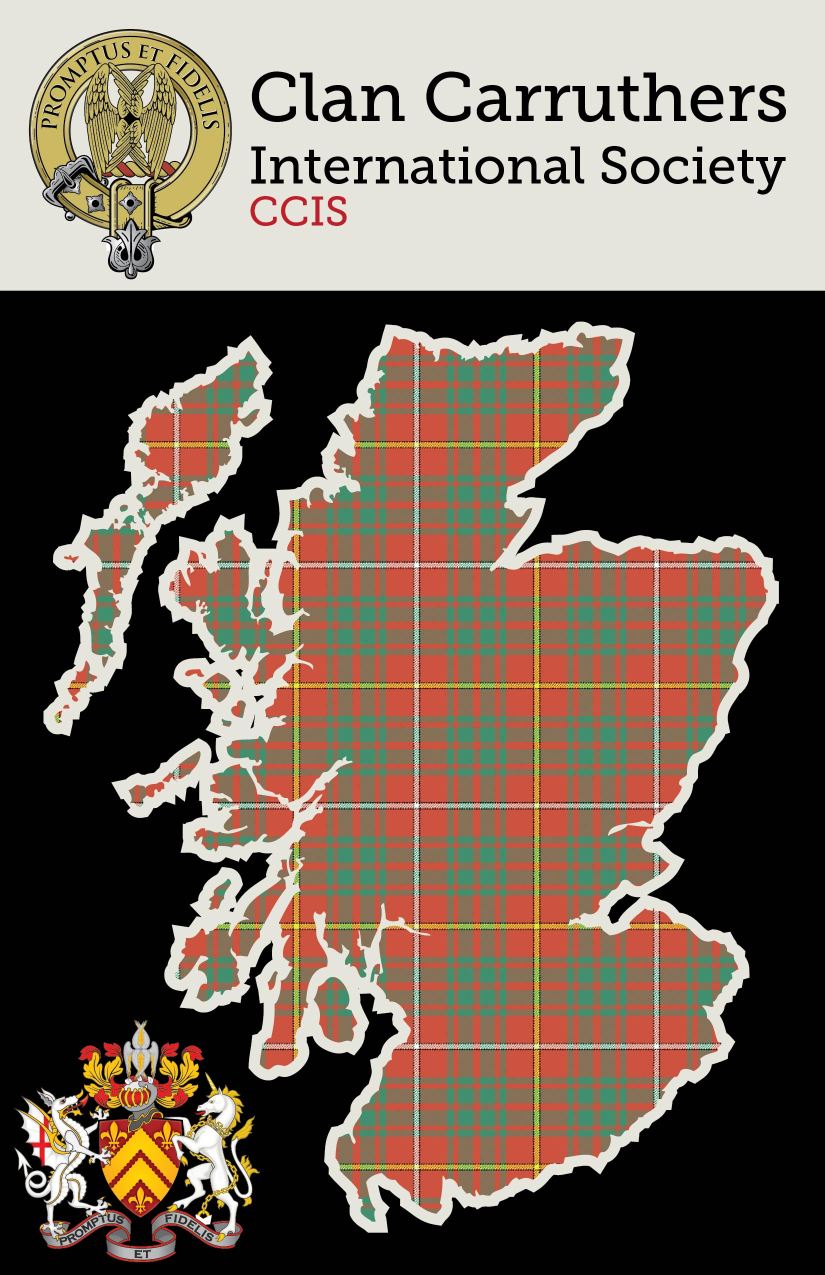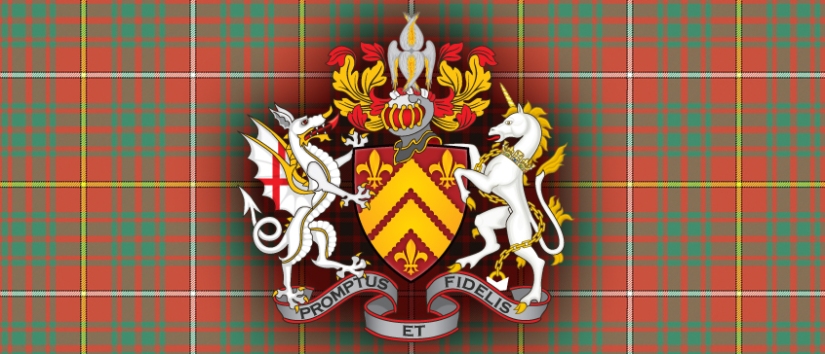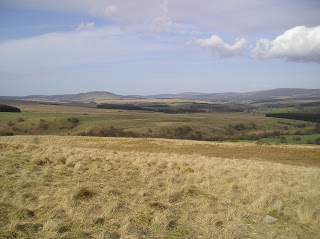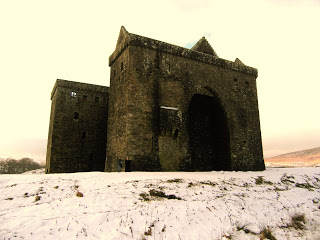
HELL AT GLENCOE
WHAT LED TO THE MASSACRE IN THE SCOTTISH HIGHLANDS
In 1692, government troops shot, bayoneted and burned to death up to 40 Highlanders in a remote corner of Scotland. Why, asks Allan Kennedy, did King William III & II authorise an act of such calculating brutality?

It was early when the soldiers roused themselves, the dawn still a distant promise. As they mustered in the darkness, they likely could not see much of the rugged valley surrounding them, the narrow river running through its centre, or the forbidding mountain peaks pressing in from all sides. Nor, probably, did they care, for the grim task before them was surely enough to occupy their minds. In the name of William III & II and Mary II, joint king and queen of Scotland, these 120-or-so men (most of whom probably hailed from the Scottish lowlands) were charged with bringing order to a remote corner of the realm. They were to do so at bayonet-point, by visiting exemplary punishment on a group of people that, in the judgment of William and Mary’s ministers, had proved insufficiently enthusiastic in their submission to government authority.
As they stood in the winter chill, preparing to begin their bloody work, the troops cannot have known that what they were about to do would forever be remembered as one of the most horrific acts of political violence in British history. For this was Glencoe, home to a small sept of Clan MacDonald, and on the morning of 13 February 1692, it became the site of a massacre.
The soldiers, led by Captain Robert Campbell of Glenlyon, had been quartered in Glencoe for nearly a fortnight. The troops had ostensibly been extracting ‘free quarter’, meaning that the local populace (made up of perhaps 200 families) was being forced to provide them with food and board – a common mechanism in early modern Scotland for punishing people, such as the MacDonalds, who had failed to pay their taxes. All the while, however, the groundwork was secretly being laid for the massacre.
“It would forever be remembered as one of the most horrific acts of political violence in British history”
Glenlyon received his final orders on 12 February: “Yow are hereby ordered to fall upon the Rebells, the McDonalds of Glenco, and putt all to the sword under 70. You are to have a speciall care that the old Fox and his sones doe upon no account escape your hands. You are to secure all the avenues that no man escape. This you are to putt in executione att fyve of the clock precisely.”
Glencoe sits near the south-western end of the Great Glen. The National Trust for Scotland is preparing to launch a £300,000 archaeological investigation into their site of the massacre. (Image by Shutterstock)
Kill without hesitation
So it was that, at the appointed hour, Glenlyon mustered his men around the settlement of Inverrigan, a short distance into the five-mile-long glen. While he remained there, parties of around 20 men were dispatched to fall upon the glen’s various other settlements, each with orders to enter the main homes and kill without hesitation.
The primary target was Alasdair MacDonald, also known as MacIain, the aged clan chief and the ‘old fox’ referred to in Glenlyon’s orders. He lived at Polveig, near the mouth of the glen. As the soldiers burst into his home, he rose to greet them and began to get dressed, but fell dead when a volley of gunfire thundered into his back. MacIain’s sons, Iain, Alasdair and Archibald, were marked for similar treatment, but all managed to escape into the hills, thanks to warnings from their servants.
 Meanwhile, another party of troops descended on the settlement of Achnacone, further into the glen, where they broke into the largest house to find eight men huddled around a fire. Guns were immediately discharged; five of the men died, but the others managed to flee. Similar scenes were played out all through Glencoe, although the chosen weapon was not always gunfire; one attack at Leacantuim saw 80-year-old Archibald MacDonald bludgeoned into unconsciousness, before later being burned alive inside a house where he had taken refuge.
Meanwhile, another party of troops descended on the settlement of Achnacone, further into the glen, where they broke into the largest house to find eight men huddled around a fire. Guns were immediately discharged; five of the men died, but the others managed to flee. Similar scenes were played out all through Glencoe, although the chosen weapon was not always gunfire; one attack at Leacantuim saw 80-year-old Archibald MacDonald bludgeoned into unconsciousness, before later being burned alive inside a house where he had taken refuge.
Back at Inverrigan, Glenlyon was not idle. Nine men, bound hand and foot, likely to prevent them raising the alarm, were shot one by one, before the soldiers turned their attention to the rest of the village. The attack seems to have been chaotic, and many MacDonalds escaped, although others, including an old woman and a boy no older than five, did not. There was little room for mercy; when Glenlyon himself attempted to save the lives of two young men, one of his fellow officers, citing their orders, overruled him and shot them both.
From about 7am, Glenlyon began receiving reinforcements from nearby Fort William. By late morning there were well over 600 soldiers in Glencoe, but there was little left for them to do. The MacDonald townships were all smoking ruins, and most of those who had not been killed had long-since escaped. Instead, the soldiers rounded up the MacDonalds’ cattle and drove them back to Fort William in an act of confiscation-cum-plunder. As they withdrew back to their quarters, the troops left somewhere between 30 and 40 MacDonalds dead.
A medal marking the English coronation of William and Mary in 1689. By 1691, William was demanding that the Jacobite chiefs sign an oath of allegiance to him. (Image by Bridgeman)
The massacre was a consequence of a short-term crisis in the governance of the Scottish Highlands, combined with much longer-term trends. Lowland Scots had been developing hostile ideas about Highlanders since at least the 14th century, and by the 1690s this discourse – which tended to shape English and other non-Scottish views as well – was firmly rooted in the idea that Highlanders were violent, barbaric, uncivilised and fundamentally disorderly. In the estimation of one particularly hostile contemporary observer, Andrew Fletcher of Saltoun, they were “more contemptible than the vilest slaves”. And the worst of the lot were widely held to be those who, like the Glencoe MacDonalds, lived in Lochaber, the wild and mountainous region at the south-western end of the Great Glen.
For most of the 17th century, but particularly during the reigns of Charles II (1660–85) and James II & VII (1685–89), such antipathy laid particular stress on the idea of lawlessness, thereby casting Highlanders as incorrigibly criminal, with cattle-rustling being the offence of which they were most commonly accused. Under both Charles and James, various mechanisms for suppressing Highlanders’ supposed lawlessness had been tried, but with the increasingly prominent connecting thread of using military force (or the threat thereof) to beat Highlanders into line. So, when William and Mary became king and queen of Scots in 1689 (after ousting James VII in the so-called Glorious Revolution), they inherited a realm that had become accustomed to treating its Highland inhabitants – probably not much less than half of the entire population of Scotland – as a threatening ‘other’ that needed to be kept robustly in line.
Latent suspicions
In the short term, the story that terminated in Glencoe began three years earlier at Dundee. It was there on 13 April 1689 that John Graham, Viscount Dundee raised the standard of James VII, proclaiming the start of the first Jacobite rising. Dundee was aiming to restore James as king of Scots, two days after the Scottish parliament had formally declared him deposed in favour of William and Mary.
Despite scoring a military victory over Williamite forces at the battle of Killiecrankie in July, during which Dundee himself was killed, the rising never posed a particularly serious threat to the new monarchs, and by late 1690 it had more or less petered out. Crucially, however, the rising had been sustained almost entirely by Highland manpower, thus confirming latent suspicions that Highlanders were naturally disloyal and disorderly. The events that would unfold were fundamentally shaped by that conviction.
At first, though, William’s government seemed to proceed with caution. In June 1691, it entered negotiations with the remaining Jacobites, with the talks being conducted at Achallader in Perthshire under the leadership of John Campbell, 1st Earl of Breadalbane. Armed with a slush fund of £12,000 to help lubricate the negotiations, Breadalbane persuaded the Jacobite chiefs to agree to a three-month cessation of arms.
This agreement outraged much of the Williamite establishment because of its generosity to the Jacobites – after all, it provided for nothing more than a truce, and did not even require the chiefs to renounce their support for James VII. Nevertheless, when the terms of the Achallader agreement were presented to him, King William swiftly ratified them. Already, however, there were signs that this apparent moderation concealed a more ruthless impulse. This was most evident in the establishment in 1690 of a new military installation at Fort William, specifically intended to provide the government with coercive muscle on the ground.
Shortly after the Achallader talks came to an end, William raised the stakes still further by issuing a proclamation, dated 17 August 1691, in which he demanded that all the Jacobite chiefs sign an Oath of Allegiance to him no later than 1 January 1692. If they acquiesced, they would receive a pardon and be accepted into the king’s peace; if they refused, they could expect consequences.
For some, Glencoe offered proof of the Scots’ brutishness, and the need for Scotland to be ‘rescued’ by the union with England
Over the next few months, all the Jacobite clans capitulated and signed the oath, a process greatly assisted by James VII’s decision in December to release them from their earlier oaths to him. But in the case of the MacDonalds of Glencoe, there was a hitch. MacIain arrived at Fort William on 31 December 1691 ready to give his family’s allegiance. But there was nobody at the fort empowered to receive it. The nearest competent official was at Inveraray, 40 miles distant. By the time MacIain got there, it was 6 January – five days after the deadline.
 The Glencoe MacDonalds were not the only ones to miss the deadline, but because of the clan’s small size and long-standing reputation for being troublesome, hardline elements within William’s government decided they could safely be used to deliver a broader lesson to unruly Highlanders. Crucial in this was John Dalrymple, Master of Stair, recently appointed secretary of state by William, and a man determined to advertise his loyalty to the new regime. On 7 January 1692, Stair issued an edict that all those who had failed to take the oath were to be destroyed, and on 11 January he added more specific orders singling out the Glencoe MacDonalds.
The Glencoe MacDonalds were not the only ones to miss the deadline, but because of the clan’s small size and long-standing reputation for being troublesome, hardline elements within William’s government decided they could safely be used to deliver a broader lesson to unruly Highlanders. Crucial in this was John Dalrymple, Master of Stair, recently appointed secretary of state by William, and a man determined to advertise his loyalty to the new regime. On 7 January 1692, Stair issued an edict that all those who had failed to take the oath were to be destroyed, and on 11 January he added more specific orders singling out the Glencoe MacDonalds.
A third set of orders, dated 16 January and this time bearing the signature of William himself, confirmed that the MacDonalds were to be “extirpated”. It was in response to these instructions that Glenlyon was dispatched to Glencoe on 1 February to await the green light.
Intense public outcry
The bloodletting that followed two weeks later was, in its immediate aim of killing off Highland Jacobitism, a huge success. Following the Glencoe massacre, William would never again face serious Jacobite agitation in Scotland. But this security was offset by devastating reputational damage.
At first, news of the massacre spread slowly. It was not until two months later that the first account of the atrocity appeared in print – in the form of a short and fairly sober account of the killings produced by the Jacobite press in Paris. Soon, however, British Jacobites were capitalising on Glencoe’s propaganda potential and, from the end of 1692, a steady stream of pamphlets stirred up an intense public outcry.
Even in an age inured to violence, the cold, calculating nature of the government’s actions at Glencoe was horrifying, as was the fact that the soldiers had been living with their victims for a fortnight prior to turning on them. King William, supposedly an antidote to James VII’s autocratic regime, and the champion of freedom across Europe, now risked being seen as more vicious than the worst continental despots.
Horror soon turned to outrage, and emotions boiled over in the 1693 session of the Scottish parliament, which demanded an inquiry into the massacre. One was set up, but it never met, and so the 1695 session reiterated the demand more forcefully. This time, the authorities relented, establishing a Commission of Inquiry that did meet, submitting its report to the king in June.
The 1695 report condemned the massacre, calling it murder and declaring it “barbarous and inhumane”. Most of the main actors, including the military men and, crucially, the king himself, escaped condemnation. But a scapegoat was readily found, and the man chosen to shoulder the blame was John Dalrymple, Master of Stair.
“The Master of Stair’s letters had exceeded your majesties’ instructions towards the killing and destruction of the Glencoemen,” the report intoned, before going on to observe that Dalrymple had “absolutely and positively ordered” the MacDonalds to be “destroyed without any further consideration than that of their not having taken the indemnity in due time.”
Thus the commission painted Dalrymple as a bloodthirsty obsessive who had deliberately betrayed the king’s trust, and he was formally censured in parliament. He was never to face trial, but having clearly been set up to carry the can for the whole sorry affair, he was eased out of his office as secretary of state before the year was out.
The grisly apogee
Many of the MacDonalds eventually returned to Glencoe, and it remained populated until at least the 18th century. Today, little trace survives of the original settlements, or of the massacre itself; tourists must make do with a stone memorial and a modern visitor centre. But the murders committed on that freezing February morning in 1692 have long since passed into infamy, and over the years they have been pressed into service to further a variety of agendas.
For some, the massacre offered proof of the Scots’ brutishness, helping make the case for Scotland to be ‘rescued’ by the Anglo-Scottish union of 1707. For others, it demonstrated the essential victimisation of the country at the hands of a monarchy vastly more interested in England (and, in William’s particular case, the Netherlands). In this reading of history, it was less an advert for union than for independence.
Still others, viewing the massacre as the grisly apogee of Highlanders’ enthusiasm for violence and feuding, have used it to argue for the backwardness of Gaelic culture. And some, interpreting Glencoe as a form of anti-Gaelic ethnic cleansing, have suggested that it highlighted the fundamental incompatibility of Scotland’s Gaelic and Lowland identities.
Many of these interpretations are historically dubious. However, they serve to demonstrate how the Glencoe massacre has wormed its way into Scottish national consciousness. But with the National Trust for Scotland, which today owns much of the glen, preparing to launch a new, £300,000 archaeological investigation into its history, now is an opportune moment to reconsider the events of 1692. Above all, we should recognise that, behind the layers of recrimination, myth-making and narrative-building, lies a harrowing human tragedy that, more than three centuries later, still retains the power to shock.

CLAN CARRUTHERS SINCE 1983
Preserving Our Past, Recording Our Present, Informing Our Future
Ancient and Honorable Clan Carruthers Int Society CCIS LLc
carruthersclan1@gmail.com carrothersclan@gmail.com

Allan Kennedy
University of Dundee, Scotland
CLAN SEANAHAIDHI
CLAN CARRUTHERS INT SOCIETY HISTORIAN AND GENEALOGIST

You can find us on facebook at :
https://www.facebook.com/CarruthersClan/
Disclaimer Ancient and Honorable Carruthers Clan International Society CCIS LL


 Regent Moray (James Stuart. earl of Moray and Mar, half-brother of Mary, Queen of Scots) suggested the alliance of the neighbouring counties in 1569 to counteract Liddesdale’s power and it was readily acceptable. Exhausted by the relentless infighting with their own countrymen, the inhabitants of Berwick,Roxburgh, Selkirk and Peebles welcomed the action.
Regent Moray (James Stuart. earl of Moray and Mar, half-brother of Mary, Queen of Scots) suggested the alliance of the neighbouring counties in 1569 to counteract Liddesdale’s power and it was readily acceptable. Exhausted by the relentless infighting with their own countrymen, the inhabitants of Berwick,Roxburgh, Selkirk and Peebles welcomed the action. The leaders of such families as the Grahams of England and the Armstrongs of Scotland were summarily executed whenever they were apprehended. Others shipped to Ireland where they lived a life of penury for years in the bogs of Roscommon. Some were sent to the Low countries to garrison the towns of Flushing, Brille and Ramekins in the Dutch war with Spain.
The leaders of such families as the Grahams of England and the Armstrongs of Scotland were summarily executed whenever they were apprehended. Others shipped to Ireland where they lived a life of penury for years in the bogs of Roscommon. Some were sent to the Low countries to garrison the towns of Flushing, Brille and Ramekins in the Dutch war with Spain.  Hermitage-Castle
Hermitage-Castle












 Meanwhile, another party of troops descended on the settlement of Achnacone, further into the glen, where they broke into the largest house to find eight men huddled around a fire. Guns were immediately discharged; five of the men died, but the others managed to flee. Similar scenes were played out all through Glencoe, although the chosen weapon was not always gunfire; one attack at Leacantuim saw 80-year-old Archibald MacDonald bludgeoned into unconsciousness, before later being burned alive inside a house where he had taken refuge.
Meanwhile, another party of troops descended on the settlement of Achnacone, further into the glen, where they broke into the largest house to find eight men huddled around a fire. Guns were immediately discharged; five of the men died, but the others managed to flee. Similar scenes were played out all through Glencoe, although the chosen weapon was not always gunfire; one attack at Leacantuim saw 80-year-old Archibald MacDonald bludgeoned into unconsciousness, before later being burned alive inside a house where he had taken refuge.
 The Glencoe MacDonalds were not the only ones to miss the deadline, but because of the clan’s small size and long-standing reputation for being troublesome, hardline elements within William’s government decided they could safely be used to deliver a broader lesson to unruly Highlanders. Crucial in this was John Dalrymple, Master of Stair, recently appointed secretary of state by William, and a man determined to advertise his loyalty to the new regime. On 7 January 1692, Stair issued an edict that all those who had failed to take the oath were to be destroyed, and on 11 January he added more specific orders singling out the Glencoe MacDonalds.
The Glencoe MacDonalds were not the only ones to miss the deadline, but because of the clan’s small size and long-standing reputation for being troublesome, hardline elements within William’s government decided they could safely be used to deliver a broader lesson to unruly Highlanders. Crucial in this was John Dalrymple, Master of Stair, recently appointed secretary of state by William, and a man determined to advertise his loyalty to the new regime. On 7 January 1692, Stair issued an edict that all those who had failed to take the oath were to be destroyed, and on 11 January he added more specific orders singling out the Glencoe MacDonalds.



